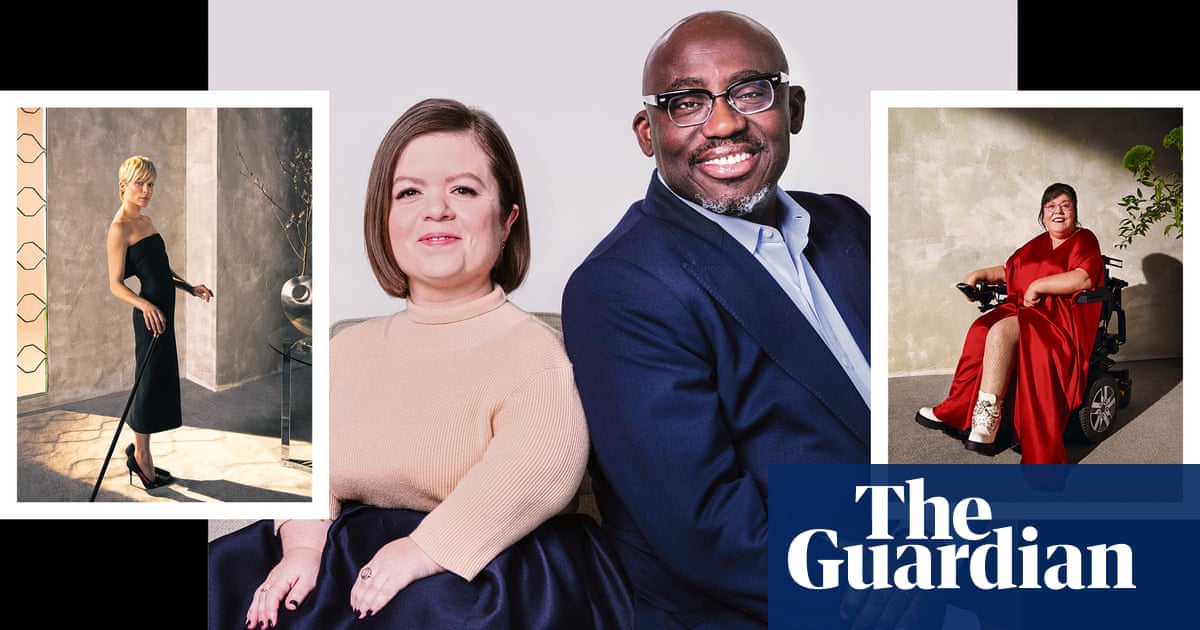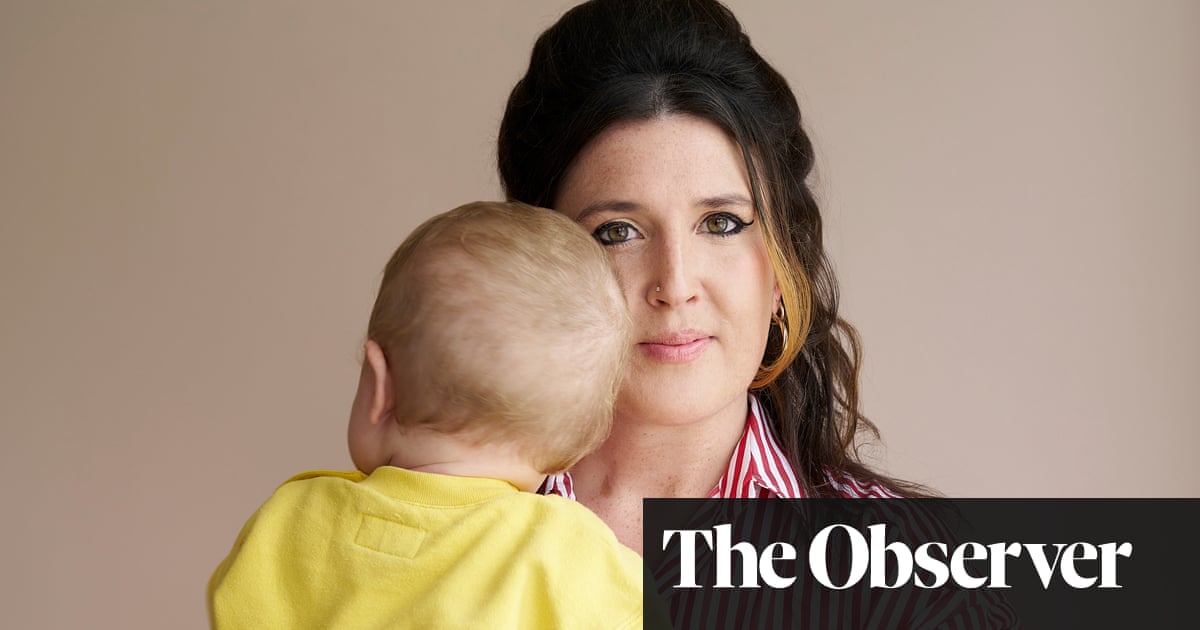
Neil Gaiman: ‘It took a while for me to persuade people Coraline really was children’s fiction’
I’ve created an awful lot of things. Some would point to the little kid in the Click Clack the Rattle Bag story. But for me, it’s got to be the Other Mother from Coraline. She is absolutely terrifying.
Some of the other scary characters I’ve created, such as Mr Croup and Mr Vandemar in Neverwhere, are terrifying but also funny. Ursula Monkton in The Ocean at the End of the Lane is terrifying, but she’s kind of sympathetic too. There is no feeling for the Other Mother. She is a predator and she is after Coraline. We just have to hope that Coraline is going to get out of the story in one piece.
I wasn’t scared when I was writing Coraline, and I think that was because I loved writing the Other Mother so much. You don’t, as an author, often get the chance to write somebody who is so dark all the way down. It took a while for me to persuade people this really was children’s fiction. I’d been told the first half of Coraline was literally unpublishable.
For me, the most profound fears are childhood fears, and some of them are utterly irrational. Coraline goes back to me at about nine, sitting in school and suddenly thinking, what would happen if my parents moved house and forgot about me? And there’s another family in my house? And then what if the other family looks like my family? I would go home and think, ‘Is this the same family I left?’ I let that fear expand into the book and created the Other Mother. I think that’s probably the reason why she is genuinely terrifying and so long-lasting – and seems to be gaining traction.
Lauren Beukes: ‘Most of us are probably not going to meet a time-travelling serial killer, but there are a lot of Billies out there’
Billie from Afterland is pretty scary. She has always been a hustler and a narcissist, and she has a sibling rivalry with her sister, Cole. Afterland is set in a world where 99% of the male population have died, so there’s suddenly a very high demand for boy trafficking and sperm trafficking. Cole’s son Miles happens to be one of the few male survivors, so Billie begins to justify why they should pass her nephew on to terrible people. She feels her sister owes it to her. When Cole won’t play along, Billie kidnaps Miles in the middle of the night. She betrays everyone she loves, and she justifies it the entire way.
I’ve had encounters with narcissists before – people who twist everything around, who cannot see your side, who lack compassion, who are just out for themselves. Gaslighting is a very real and present danger that we can encounter. Anyone who has had a run-in with a narcissist knows how devastating that can be.
My time-travelling serial killer Harper Curtis from The Shining Girls and possessed murderer Clayton Broom from Broken Monsters represent misogyny and toxic masculinity, and are technically scarier, but Billie is the kind of person you’re going to meet in real life. Most of us are probably not going to meet a time-travelling serial killer, but there are a lot of Billies out there.
We’re not used to seeing women as the villains in this way. I spent two years trying to make the bad guy a man. Then I realised it had to be the sister. And she just emerged and she was like, ‘Come on bitch, I’ve been waiting!’
Tananarive Due: ‘This creature was scary because it was loosely based on a real-life incident’
I have a demon in my novel The Good House that is technically called a baka, but goes by the name of Becka as a way to mix with humans. This character is very frightening because it’s a shapeshifter who can possess people. Becka is the form of a little girl it possessed, which is one of its favourite forms. It’s a trickster that basically whispers evil in your ear and tries to get you to do bad things. If that doesn’t work, it can possess you. I find it terrifying. This baka is part of an intergenerational curse, very hard to cleanse, very hard to spot. And without giving away too much, we’ll just say that it keeps my character on her toes.
I do, from time to time, scare myself writing a creature and this one was scary because it was loosely based on a real-life incident. When I first started writing, I was working full-time as a reporter, so I had to write first thing in the morning and late at night. I would spook myself right before bedtime – that was when the veil between my world and the book world would thin.
Joe Hill: ‘What’s most unsettling about Mother Carol isn’t the monstrous part of her nature. It’s her humanity’
The most chilling thing about a great villain isn’t the fangs, or the thirst for blood, or the tentacles squirming from unfortunate orifices. The scariest aspect of all the best antagonists are the stories they tell themselves ... the deluded narratives in which they’re the heroes. Charlie Manx, the monster at the centre of my novel NOS4A2, kidnaps children and turns them into little ghouls, but has convinced himself he’s really saving them from the awfulness of adulthood.
But for sheer fear, I think Mother Carol, from The Fireman, is even more worrisome. Carol rules over a secret camp of folks infected with a pathogen that kills by spontaneous combustion. But this little community of the sick aren’t just at risk of burning to death – if the healthy discover them, they could face extermination. Paranoid over external threats, they can risk no internal dissent. People who disagree with Carol are silenced, forced to carry a stone in their mouths. More serious infractions call for more serious abasements. And if you don’t like it? Anyone who tries to leave is solemnly stoned to death. Carol isn’t motivated by hate, but a fierce love for the followers who adore her. What’s most unsettling about her isn’t the monstrous part of her nature. It’s her humanity.
Paul Tremblay: ‘One editor called and said, “I just read the tongue scene, and I had to hear somebody’s voice”’
I think the scariest thing I’ve written is A Head Full of Ghosts. Marjorie is 14 years old, and she is either showing early signs of schizophrenia or she’s possessed. Her family, which includes her younger sister Merry, is in such economic dire straits that they allow a reality TV crew to come in and document an attempted exorcism.
I think the scariest parts are the ones that seem the least likely to be supernatural. There is a moment where Merry and Marjorie are talking and Marjorie suddenly threatens to rip out Merry’s tongue. My agent sent the book to a bunch of editors, and at 11.30 at night he got a phone call from one of them, who said, ‘I just read the tongue scene, and I had to hear somebody’s voice.’
I’d never tell you outright if anything supernatural is happening or not. Ambiguity to me is our existence. Our memories, our identity, even existence itself is a lot more muddy than we like to believe. I think readers have a hard time with it sometimes, because a lot of people go through life thinking they know what’s going to happen when we die, but we really don’t. If a horror story can really get at that ambiguity, I think it gets at us in some innate way.
Christina Henry: ‘There’s something inherently terrifying in not having control over your own body’
I tend to think that people are scarier than supernatural monsters. My scariest creation would be the Caterpillar in my novel Alice. In the book, the Old City is a place where women have no value except as commodities, and the Caterpillar takes that to the nth degree, to the point where he’s willing to physically deform women, for the pleasure of men. And there’s something very, very disturbing about him being human, but he has no humanity.
There’s something inherently terrifying in not having control over your own body. Alice, the main character, is an assault victim so I spent so much time in her head and feeling her feelings. It is a book about trauma. As the author, you’re experiencing that with your character, so it was very emotional writing.
Stephen Graham Jones: ‘Every single day of my life when I am out walking, this story is whispering over my shoulder’
The scariest thing I’ve ever written, to me at least, is this one story from Zombie Sharks with Metal Teeth, Deathtrap Whirlpool. It’s about a guy who’s constantly being watched by cameras from the future, and is, for the moment, the star of a huge gameshow where viewers all vote on whether he’ll go left around a planter in the sidewalk, or right. Or maybe they’re not there at all, which is possibly more terrifying
Every single day of my life when I am out walking, this story’s whispering over my shoulder. There’s this idea about horror writers that if you exorcise all the bad stuff from your head, then it’s trapped on the page. I’ve actually found that putting your own terrors on the page just gives them more delineation, a kind of permanence in the world that they didn’t really have before. The plight of Deathtrap Whirpool, where each step is suspect, each decision momentous, is a way of thinking that I had to, in order to pass it on to the reader, process myself. But I assumed I was immune. Wrong. I was just the first one to catch it, and now I can’t seem to shake it. Some infections, they become part of your DNA, right? Deathtrap Whirlpool is one of those for me.
Ramsey Campbell: ‘I didn’t expect the world to catch up with the Noble family so soon’
I think Christian Noble and his family might send something no longer human to deal with me if I didn’t vote for them. They’re central to my trilogy, The Three Births of Daoloth. In the 1950s Christian founds a cult that sends the recently dead where he doesn’t dare venture himself. In the 1980s, he’s behind a facility that sends children voyaging beyond the physical and the terrestrial. And in the present day, he and his descendants run the cult in open sight.
When I conceived the Noble family, I meant them to epitomise how irrationality is gaining ascendance in the world, but I didn’t expect the world to catch up with them – if not overtake them – so soon. They offer visions of cosmic terror, but what they welcome most is chaos. Perhaps they’re scariest because we needn’t look far to find their like.












